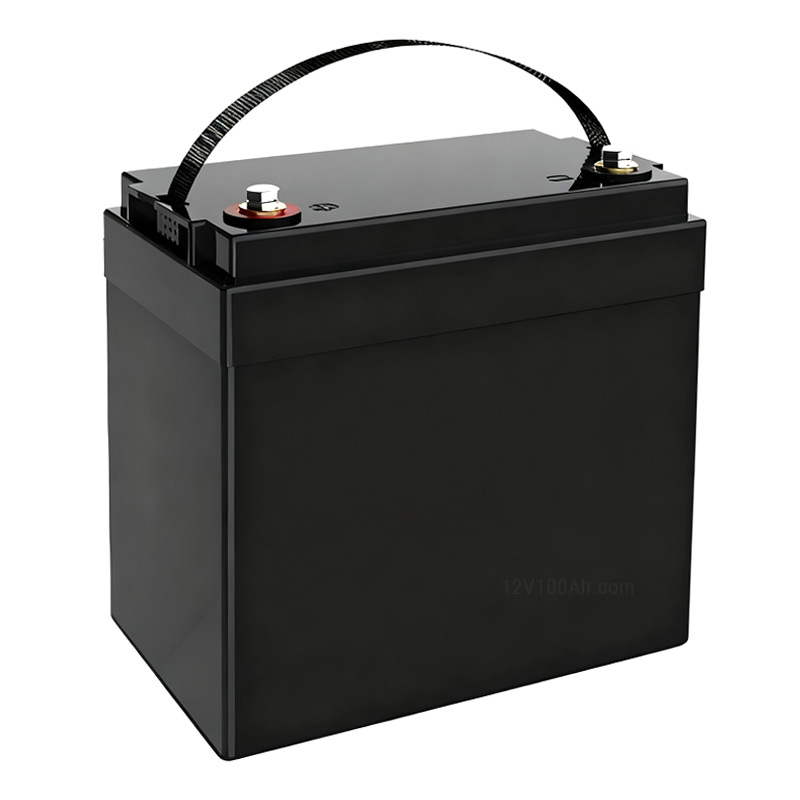
Using two 12V 50Ah LFP batteries in parallel versus a single 12V 100Ah LFP battery provides the same nominal capacity (12V 100Ah) but differs in installation, management, reliability, weight distribution, and maintenance. The following sections explain the technical and practical differences so RV owners can decide which option fits their needs.

Two 12V 50Ah batteries can be placed in separate compartments or locations within the RV. This helps balance weight across the chassis and can improve handling and stability. A single 12V 100Ah battery concentrates weight in one spot and may require a stronger mounting point.
Smaller 50Ah units are lighter and easier for one person to carry and install. A 100Ah pack is heavier and may need two people to lift and secure, making initial installation more challenging.
Two batteries in parallel require matched wiring lengths and gauge to ensure even current sharing. More connections and busbars increase points of potential failure. A single 100Ah battery needs only the main positive and negative cables, simplifying wiring and reducing resistance and connector losses.
Each battery usually has its own BMS. When two units are paralleled, BMS timing and thresholds must be compatible to prevent uneven charging or protective shutdowns. A single 100Ah battery uses one BMS for all cells, which simplifies state-of-charge management and cell balancing.
A single 100Ah battery often offers consistent instantaneous current capability because its internal cells are matched and the BMS manages the whole pack. Paralleled 50Ah batteries can share high currents but only if their internal resistance and SOC match closely; otherwise one pack may take more load and heat up faster.
Voltage sag under heavy loads tends to be slightly better controlled by a well-designed single 100Ah pack. Paralleled packs can maintain voltage well if balanced correctly, but mismatches can cause uneven voltage drops.
Two independent 50Ah batteries offer redundancy: if one fails, the other can still provide partial power. This reduces the chance of total power loss while camping off-grid or during long trips.
A single 100Ah battery centralizes the risk—if it fails, the RV can lose all house power. However, single packs are often built with robust protection and fewer connectors, which lowers connection-related failure risks.
With two batteries, owners should periodically check individual voltages, internal resistances, and temperature to ensure balance. Paralleled systems may require occasional manual balancing or a charger that performs equalization. A single battery requires less frequent balancing checks because the pack is internally matched.
Replacing one 50Ah unit is cheaper and quicker than replacing an entire 100Ah pack. On the other hand, a single pack has fewer components to inspect and may be simpler to diagnose when problems occur.

Two smaller batteries can be slightly more expensive overall due to duplicated BMS units and additional hardware (connectors, busbars, fuses). A single 100Ah battery usually offers a slightly better cost-to-capacity ratio.
Long-term maintenance cost may be lower with two batteries if you only replace one failed module. Conversely, a single pack may require full replacement but typically has fewer ancillary parts and simpler upkeep.
Both LFP options are among the safest lithium chemistries due to thermal stability. A single 100Ah pack's single BMS typically offers integrated protections (overcharge, overdischarge, overcurrent, temperature). Two separate 50Ah packs must each provide protection and be wired to avoid reverse currents; adding fuses on each positive terminal is recommended.
Distributed 50Ah batteries can dissipate heat across two enclosures, which may help cooling. A single heavy pack concentrates heat and mechanical stress, so mountings and ventilation become more important.
Paralleled 50Ah packs are easier to expand later—add another identical 50Ah module to increase capacity. Expanding a single 100Ah system usually means replacing the pack or adding an entirely separate battery bank, which could be more complex.
Two batteries support modular use (e.g., separate circuits, isolating one bank for critical loads). A single battery does not provide this modularity without additional hardware.

Lifetime and cycle stability depend on how well cells are matched. Factory-built 100Ah packs often have tightly matched cells and a single optimized BMS, which can result in uniform aging. Paralleled packs age more evenly only if the units are matched and maintained.
Paralleled systems may need periodic equalization or matched charging profiles to avoid capacity drift between units. Single packs typically handle cell balancing internally and require less external intervention.